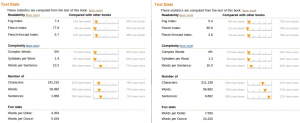Recipes for several model fitting techniques in R
As I recently tried several modeling techniques in R, I would like to share some of these, with a focus on linear regression.
Disclaimer: the code lines below work, but I would not suggest that they are the most efficient way to deal with this kind of data (as a matter of fact, all of them score slightly below 80% accuracy on the Kaggle datasets). Moreover, there are not always the most efficient way to implement a given model.
I see it as a way to quickly test several frameworks without going into details.
The column names used in the …
more ...